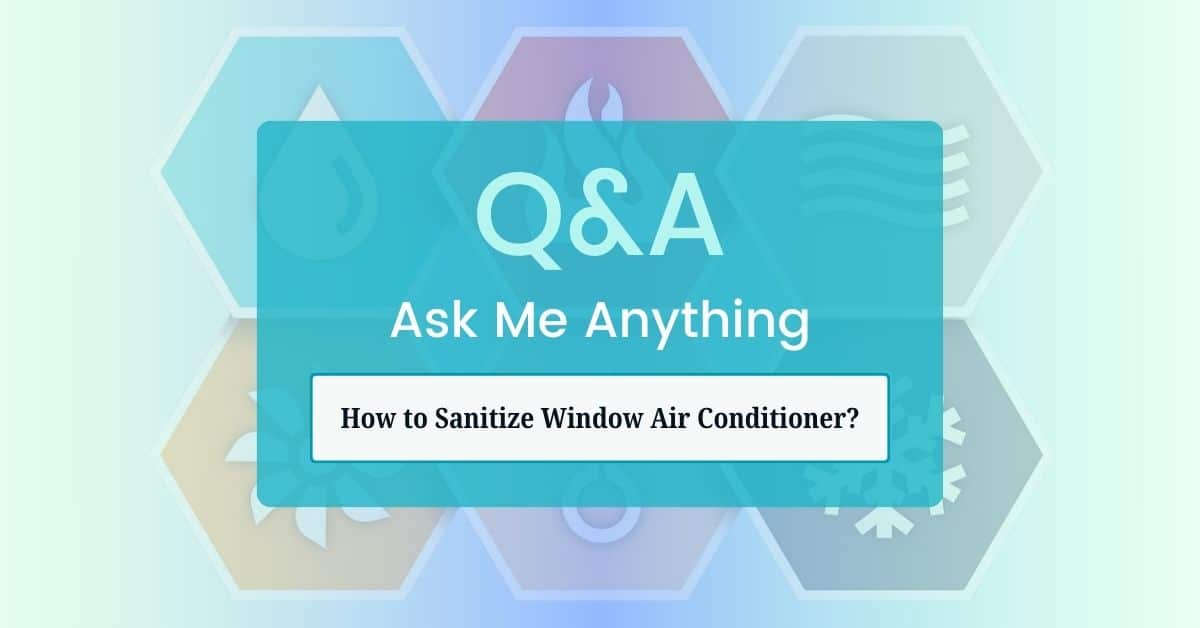Sanitizing a window air conditioner helps eliminate bacteria, mold, and other contaminants that could affect your indoor air quality. Regular sanitization keeps the unit running efficiently and ensures that the air it circulates is clean and allergens-free. Below is a detailed, step-by-step guide on how to sanitize a window air conditioner effectively.
Tools and Supplies Needed
- Gloves, Mask, and Safety Goggles: For protection from cleaning chemicals and allergens.
- Screwdriver: To remove the front panel and access internal parts.
- Vacuum with Brush Attachment: For removing dust and debris.
- Spray Bottle with Sanitizing Solution: Use a mixture of 1 part bleach to 10 parts water or a non-toxic commercial sanitizer safe for ACs.
- Mild Dish Soap: For general cleaning.
- Soft Brush or Sponge: For scrubbing areas with buildup.
- Toothbrush: For getting into small, hard-to-reach areas.
- Bucket of Warm Water: For rinsing.
- Microfiber Cloths or Rags: For wiping surfaces.
- Fan or Sunlight (Optional): To speed up drying after cleaning.
Step 1: Turn Off and Unplug the Unit
Always start by disconnecting the power to avoid the risk of electric shock. Remove the unit from the window and place it on a flat surface, making cleaning easier and safer.
Step 2: Disassemble the AC Unit
- Remove the Front Panel: Use a screwdriver to remove the front panel.
- Take Out the Filter: Most window AC units have a removable air filter behind the front cover. Carefully remove it.
Step 3: Sanitize the Air Filter
- Rinse with Warm Soapy Water: Rinse the air filter under warm, soapy water to remove dust and grime.
- Sanitize with a Bleach Solution: Spray the filter with the bleach solution or sanitizing spray. Allow it to sit for 10-15 minutes to ensure it disinfects thoroughly.
- Rinse and Let Dry: Rinse the filter well to remove any residual cleaner, and allow it to air dry completely before placing it back into the unit.
Step 4: Clean and Sanitize the Coils
- Vacuum the Coils: Use a brush attachment to remove loose dust from the evaporator (indoor) and condenser (outdoor) coils.
- Spray with Sanitizer: Spray the coils with bleach or non-toxic sanitizer. Be careful not to oversaturate them, as too much liquid can damage the components.
- Gently Scrub with a Soft Brush: Use a soft brush to remove any visible grime and mold. Be careful not to bend the fins, as this can affect airflow.
- Rinse with a Damp Cloth: Wipe down the coils with a damp cloth to remove any sanitizer residue.
Step 5: Clean and Disinfect the Drain Pan
- Locate the Drain Pan: The drain pan collects condensation and can harbor bacteria and mold.
- Apply the Sanitizing Solution: Spray the drain pan generously with the bleach solution or sanitizing spray, letting it sit for 10-15 minutes.
- Scrub and Rinse: Use a sponge or brush to scrub the drain pan, then rinse with clean water to remove any residue. Dry the pan thoroughly to prevent future mold growth.
Step 6: Clean and Disinfect the Blower Fan and Other Components
- Spray the Fan Blades: Spray the fan blades with a light mist of the sanitizing solution.
- Use a Toothbrush for Small Areas: For hard-to-reach parts, like around the blower wheel or motor, use a toothbrush with a small amount of cleaner to scrub away dirt and bacteria.
- Wipe with a Damp Cloth: Wipe down the cleaned areas with a damp cloth to ensure no residue from the cleaning solution.
Step 7: Clean the Exterior and Interior Surfaces
- Spray the Interior and Exterior Panels: Spray the bleach solution or sanitizing spray onto a microfiber cloth and use it to wipe down the front panel, side panels, and any other accessible surfaces.
- Wipe the Louvers: Clean the louvers (the air vents on the front of the unit) by wiping them down with a sanitized cloth or using a toothbrush for small crevices.
- Rinse with a Damp Cloth: Use a cloth dampened with clean water to wipe down all surfaces, ensuring no sanitizer residue is left behind.
Step 8: Dry All Components
- Allow to Air Dry: Let all cleaned components air dry completely. Place them in direct sunlight if possible, as sunlight helps kill any remaining bacteria or mold spores.
- Use a Fan for Faster Drying (Optional): To speed up the drying process, you can use a fan to circulate air over the cleaned parts.
Step 9: Reassemble the AC Unit
Once everything is dry, reassemble the AC unit. Insert the clean, dry filter, replace the front panel, and ensure all screws and panels are secure.
Step 10: Run the Unit to Circulate Clean Air
After reassembling the unit, plug it back in and turn it on. Run the fan-only mode for 10-15 minutes to help circulate fresh air through the sanitized parts and ensure no cleaning odors remain.
Additional Tips for Maintaining a Sanitized AC Unit
- Clean Regularly: To prevent future mold and bacterial buildup, clean the filter at least once a month during high-use periods. Perform a more thorough cleaning and sanitization every 3-6 months.
- Use Mold-Resistant Spray: Consider applying a mold-resistant spray to the evaporator coils and drain pan. These sprays are in most home improvement stores designed to prevent mold and mildew growth.
- Run in Dry Mode: If your unit has a Dry Mode or Dehumidify setting, use it occasionally. This mode reduces moisture within the AC unit, which helps prevent mold growth.
- Keep the Unit Dry: At the end of each day, switch to fan-only mode for 10-15 minutes to dry out any remaining moisture. This simple step can prevent bacteria and mold from taking hold.
- Cover the Unit in Off-Season: When the AC is not in use, covering it with a breathable cover can help keep dust and contaminants out.
Following these steps will sanitize your window AC unit, extend its lifespan, and improve the quality of air it delivers. Regular maintenance and thorough sanitization will help ensure that your unit operates efficiently and keeps your home’s air free from contaminants.






